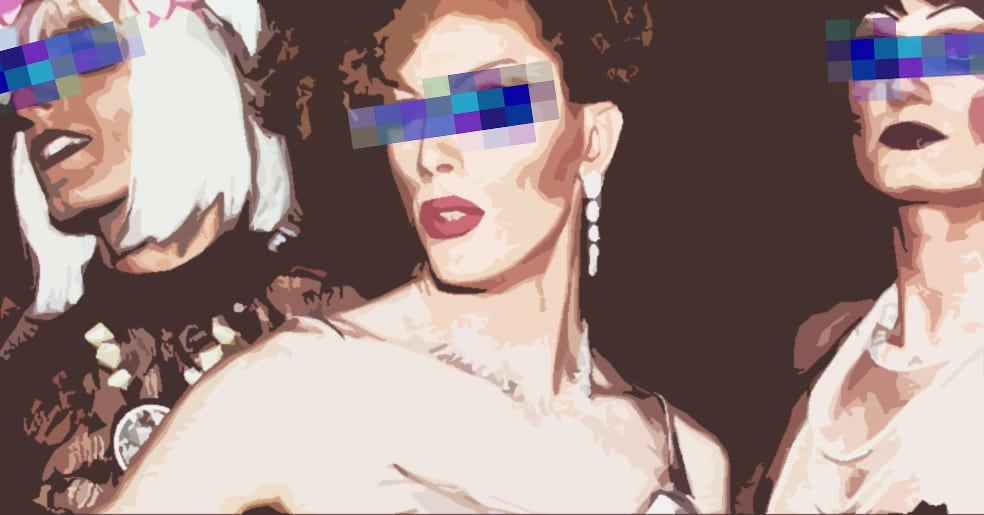- Queers, Faeries, & Revolutionaries in the Psychedelic Movement - September 26, 2018
Queer (defined here as “non-normative”) people have long been part of both the modern world of psychedelics as well as the ancient and indigenous world of medicines and psychoactive substances. Before focusing on more recent roles of Queer folk in the world of psychedelia, I would first like to acknowledge the longstanding presence of blended-spirit, two-spirit, and third gender people who existed across ancient cultures and who continue to play important roles in many current indigenous cultures.
Blended-Spirit, Two-spirit, & Third Gender Peoples

Source: https://www.diverseelders.org/wp-content/uploads/2016/03/twospirit-1-741×300.png
Two-spirit people, who identify with both male and female characteristics, existed across many Native American tribes throughout history. In many tribes, they were greatly respected and said to be more human and more spiritually gifted than other people, as they embodied characteristics of both woman and man. It was also not uncommon for these people to be apprenticed to the tribal shaman or healer. After years of oppression and annihilation from White colonialists and the Christian church, two-spirit people have been reclaiming their rightful place for the last several decades. There is evidence of their role in other shamanic cultures, including the ancient Incan and Mayan civilizations, as well as in present day Siberia. Other examples include third gender peoples from across the Pacific Islands and Indonesia and the Muxe of the Zapotec community in Oaxaca.
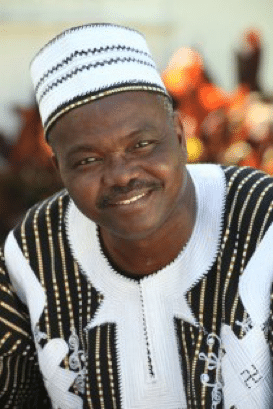
Malidoma Soméis a West African elder, author, and teacher from the Dagara tribe of Burkina Faso (east of Nigeria and north of Ghana). According to Somé, his culture honors gays as having a higher vibrational level that positions them to be guardians of the gateways to the spirit world. The term “gatekeepers” is also used by the Dogon of Mali to describe their gay and lesbian members, who are said to be able to open any and all gates (which refers to different states of consciousness), whereas heterosexual people are primarily limited to their male or female gates.
The 1950s and 1960s in the U.S.
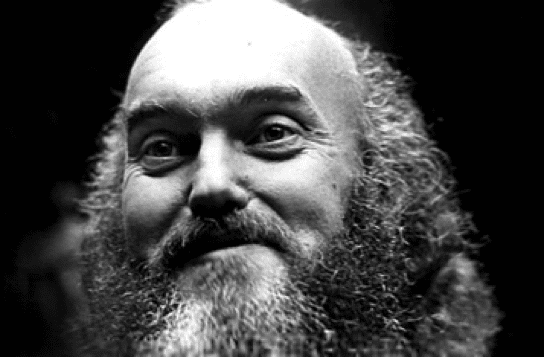
Jumping to the 1950s and 60s of the United States, we have Ram Dass, who, as Richard Alpert, was a member of the infamous Harvard Psychedelic Club, along with Timothy Leary and Andrew Weil. Interestingly, some of his earliest work at Harvard as a psychologist in the 1960s involved using LSD to help “cure” homosexuality. Much later in life, as Ram Dass, he spoke more openly about his own internalized shame as a gay man and the need for healing the guilt and shame in the gay community.
In a 2001 interview, when asked about hallucinogens as a spiritual path, he is quoted as saying, “It is a fabulous path. Everyone should try it!”.1. Throughyourbody.com. Retrieved from: https://throughyourbody.com/ram-dass-talking-about-being-gay-being-soul-friends-and-just-being/] In a later interview from 2014, he went on to say “I went from psychology to psychedelics … The mushrooms showed me my inner-self. During that first mushroom trip I said, ‘I’m home… I’m home.’ It was something that psychology had never acknowledged. Well, maybe Jung… he was on this plane,” he added. 2
From this same era, we have Allen Ginsburg: beat poet, author of “Howl” (which includes references to his peyote experiences), and leader of the counterculture movement. Along with Timothy Leary, Ginsburg strongly advocated the use of psychedelic drugs as a means of self-discovery through the expansion of consciousness. In 1966, he testified very eloquently before a Senate subcommittee conducting hearings about LSD (where he also spoke about his experiences with ayahuasca in Peru). Ginsburg met his lifelong partner Peter Orlofsky in 1954, and the two were together until Ginsburg’s death in 1997.
Genderfuck & Sparkle

Many authors and academics have pointed out that psychedelics were very connected to the gay liberation movement and both were, in part, a response to the repressive culture of 1950s America. As the psychedelic San Francisco of the ‘60s became the gay San Francisco of the ‘70s, we have the emergence of The Cockettes onto the scene.
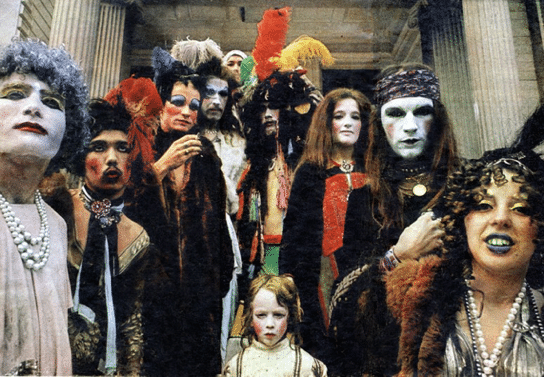
The Cockettes were an avant-garde psychedelic hippie theater group founded by Hibiscus (George Edgerly Harris II), who had been a member of a commune called KaliFlower that was dedicated to distributing free food and to creating free art and theater. The Cockettes existed from 1969 to 1972, and have been described as “When hippie meets drag on LSD”.3
The Cockettes celebrated sexual experimentation and free love, and were known for political parody, gender-bending (and blending), and LSD. Most were reported to be bisexual, celebrating a polyamorous relationship with nearly all who entered The Cockette house.
In an excerpt from Midnight at the Palace: My Life as a Cockette, former Cockette Sweet Pam writes,
The big night was October 31st and it was a mob scene… Backstage the cast preened and gossiped. In light of the holiday we were served up an additional treat in addition to the usual marijuana backstage, and no one was in any hurry. Methylenedioxyamphetamine, better known as MDA made the rounds of the usual psychedelic drug takers in the cast and even got so far as into the hands of Goldie Glitters, an unusual, non-psychedelic drug taker. Similar to its modern day cousin Ecstasy, MDA was a recreational drug with both stimulant and hallucinogenic properties. It was all we needed.4
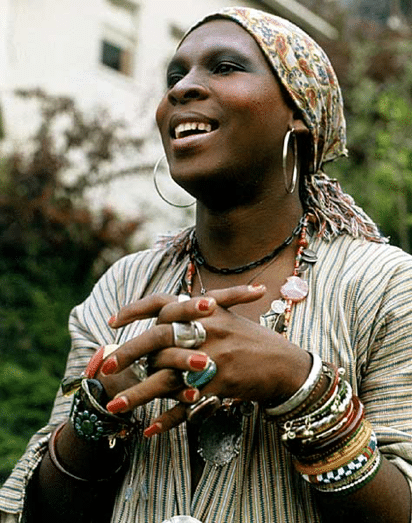
Sylvester was one of the original Cockettes, and went on to become a major musical star of the disco era and who openly and publicly enjoyed LSD and hashish. Divine (of John Waters fame) also appeared with The Cockettes.
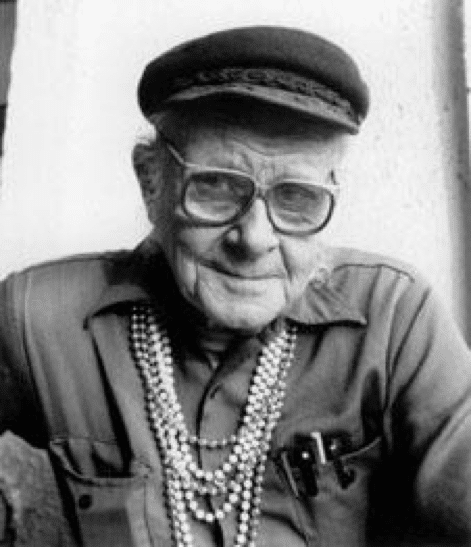
In 1979, Harry Hay(often referred to as the founder of the modern gay movementand the father of gay liberation)recognized the need for conscious beings to come together to assume responsibility for social and political change:
To share insights about ourselves
To dance in the moonlight
To renew our oaths against patriarchy/corporations/racism
To hold, protect, nurture and caress one another
To talk about the politics of the gay espiritment/ the espiritment of gay politics
To find the healing place inside our hearts
To become Inspirer/listener as we share new breakthroughs in how we perceive gay consciousness
To soar like an eagle; to re-discover/re-invent our myths
To talk about gay living/loving alternatives
To experience the groundlessness of the calmus root
To share our gay visions; to sing, sing, sing
TO EVOKE THE GREAT FAIRY CIRCLE
5
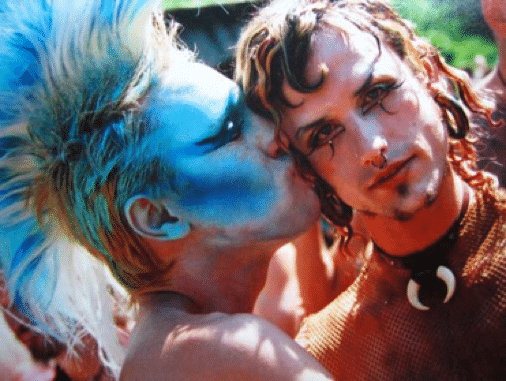
And thus the Radical Faeries were born. What is a Radical Faerie?
This mytho-poetic creature was first and foremost free of not just Hetero-normativity, but the Gay assimilationists burden of imitation as well. Straight Gayness was abandoned for a new Faerie aesthetic: cosmetic rainbows trailed from eyelids, across mustaches and around nipples; feathers, beads and bells dangled everywhere; clothing worn was for shade or to pad a seat. Modesty was quietly banished. (Saloman, n.d.)
Unlike the Cockettes, the Radical Faeries are still very much in existence today, with sanctuaries and gatherings existing in several states and in several countries.
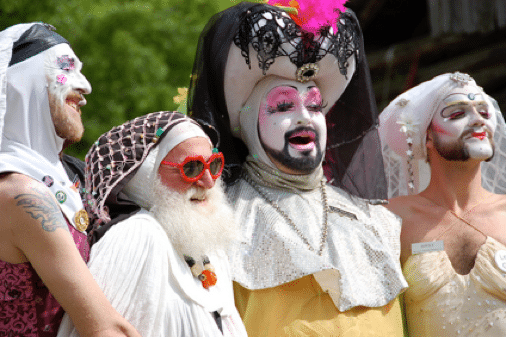
Both The Cockettes and The Radical Faeires later gave rise to San Francisco’s beloved Sisters of Perpetual Indulgence. While not explicitly connected to the use of psychedelics, they are certainly the world’s most psychedelic nuns (often referred to as radical genderfuck artists) and they advocate for raising consciousness and spirituality.
From their website:
The Sisters of Perpetual Indulgence is a leading-edge Order of queer nuns. Since our first appearance in San Francisco on Easter Sunday, 1979, the Sisters have devoted ourselves to community service, ministry and outreach to those on the edges, and to promoting human rights, respect for diversity and spiritual enlightenment. We believe all people have a right to express their unique joy and beauty and we use humor and irreverent wit to expose the forces of bigotry, complacency and guilt that chain the human spirit.
If that doesn’t espouse a psychedelic ethos, I don’t know what does.
With names such as Sister Selma Soul, Sister Sybil Libertease, Sister Anita Blowjob, and Sister Hellena Handbasket, and with orders in at least 13 US states and 8 countries on 5 continents, they have raised millions for AIDS, LGBTQ organizations, and mainstream community organizations as well. The San Francisco chapter alone has raised well over one million dollars.
There are numerous examples of other LGBTQ activists and leaders in the psychedelic movement as well, such as Dennis Peron, who, beginning with the AIDS crisis in the 1980s, led the fight for the medical use of cannabis. Legalized cannabis would not be where it is today were it not for Peron’s activism.
Emergence of Club Culture
By the late 1970s both LSD and MDMA were fueling all-night dancing; clubbing as we know it was invented by gay black men in venues such as the Warehouse in Chicago and the Paradise Garage in New York, where the house music of Larry Levan and Frankie Knuckles combined with MDMA to create a new type of gay spiritual movement. By the 1980s, this included The Saint in New York and the infamous Starck Club in Dallas.
The normal clubbing experience is intensified in gay clubs because of what American therapist Alan Downs calls “velvet rage”; many of those on the dance floor have escaped to city bars and clubs after suffering years of repression and bigotry. The music and the drugs offer a release and a place of sanctuary. Academics have compared the unifying intensity, hedonism, and liberation in gay clubs to the spirituality and escapism of historical danse macabre or “dances of death,” rituals used to cope with pain and plague in the medieval era.
The late 1980s and early 1990s saw a new era of drug exploration with the explosion of Ecstasy. Research has suggested that gay drug users have long been seen as early adopters of new club drugs, with gay men and lesbians being three times more likely to use illegal drugs than straight people.6 This has included cocaine, ketamine, molly and ecstasy, poppers, GHB, and, more unfortunately, methamphetamine. The powders (cocaine and ketamine), pills (molly), and bottled liquids (poppers) sniffed and swallowed in the cubicles of gay clubs today will be the substances passed around the straight clubs of tomorrow—or so the thinking 7. National Services: a resource for mental health professionals. Retrieved from https://www.national.slam.nhs.uk/about-us/media/partydrugdependencehighergaymen/] goes.
Queers in Today’s Psychedelic Renaissance
So, where are the queers, faeries, and revolutionaries in the psychedelic movement today? We are on this panel (now writing these articles) and we are attending and presenting at psychedelic conferences and we are coming out of the psychedelic closet in droves.
Queer shamans, healers, practitioners, and facilitators are working in the underground, on FDA approved studies, and across the globe in a variety of settings. For example, Javier Regueiro is a gay Spanish plant medicine person who works with ayahuasca and San Pedro/huachuma at his own Ayaruna Healing Center in Pisac, Peru. As the new wave of the psychedelic movement continues, it is hoped that additional people will feel emboldened to come out of the psychedelic closet.
Coming out of any closet is always a process of healing and of introspection, and often a process in need of guidance and support. It can occasion an existential crisis with the death of an old way of being and the birth of a new. Many of us in the world of psychedelics are in this new space right now and it is sometimes painful and often uncomfortable.
As Nese Devenot wrote, “the oppression and alienation of both psychedelic and queer people results from a common cultural prejudice against those who experience and interact with the world differently from the dominant and traditional population.” She goes on to say, “Queer is, by definition, whatever is at odds with the normal, the legitimate, the dominant”.8
The dominant paradigm has not included psychedelics or queerness, but that is changing at a rapid pace. Therefore, psychedelics are inherently queer. Journeying and tripping can be seen as radical acts of queerness. Thus, my psychedelic friends and colleagues, and perhaps those of you reading this article, we find ourselves in a movement full of queers today.
Note:
This paper was presented at Cultural and Political Perspectives in Psychedelic Science, a symposium promoted by Chacruna and the East-West Psychology Program at the California Institute of Integral Studies (CIIS), San Francisco, August 18 and 19, 2018.
References
- Davidson, A. (2001). Ram Dass: Talking about being gay, being soul friends, and just being …. [interview ↩
- Riggs, B. (2014, March 11). Interview: Ram Dass talks about intellect, psychedelics, love & surrendering to the imagination. Elephant Journal. Retrieved from: https://www.elephantjournal.com/2014/03/interview-ram-dass-talks-about-intellect-psychedelics-love-surrendering-to-the-imagination/ ↩
- Pinchetti, S. (2014). The Cockettes San Francisco’s hippie acid drag queens. The Other (counterculture section). Retrieved from: http://www.the-other.info/2014/the-cockettes-by-clay-geerdes-and-fayette-hauser-san-francisco ↩
- Tent, P. (2004). Midnight at the palace: my life as a Cockette. New York City, NY: Alyson Books. ↩
- Saloman, G.M. (n.d.). The subjective object; or Harry Hay in the age of mechanical reproduction. The Journal of Aesthetics and Protest, Grassroots Modernism, 8. Originally published in 2007 in Journal of Radical Shimming, 10. Retrieved from: http://www.joaap.org/issue8/MindelSaloman.htm ↩
- Beddoes, D., Sheikh, S., Khanna, M., & Francis, R. (2010). The impact of drugs on different minority groups: A review of the UK literature. Part 2: Lesbian, gay, bisexual & transgender (LGBT) groups. London: The UK Drug Policy Commission. Retrieved from: www.ukdpc.org.uk/reports.shtml ↩
- Party drug dependence higher among gay men, expert warns. (2010, September 16) [media release ↩
- Devenot, N. (2016). Psychedelics and identity politics. Psymposia.com. Retrieved from: https://www.psymposia.com/coming-out-of-the-psychedelic-closet/ ↩
Take a minute to browse our stock:
Did you enjoy reading this article?
Please support Chacruna's work by donating to us. We are an independent organization and we offer free education and advocacy for psychedelic plant medicines. We are a team of dedicated volunteers!
Can you help Chacruna advance cultural understanding around these substances?


